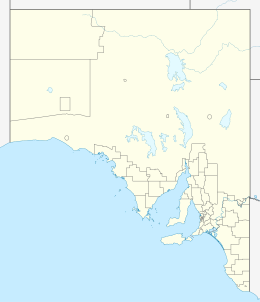Neptune Island
| Geography | |
|---|---|
| Location | Great Australian Bight |
| Coordinates | 35°14′20″S 136°04′11″E / 35.23893°S 136.0697°ECoordinates: 35°14′20″S 136°04′11″E / 35.23893°S 136.0697°E |
| Administration | |
|
Australia
|
|
The Neptune Islands consist of two groups of islands located close to the entrance to Spencer Gulf in South Australia. They are well known as a venue for great white shark tourism.
The Neptune Islands consists of two groups of islands, the North Neptune Islands and the South Neptune Islands. These both sit on the southern aspect of the Australasian continental shelf separated by a distance of 9 km (5.6 mi). The North Neptune Islands which are 27.8 km (17.3 mi) south south-east from the mainland at Cape Catastrophe, consist of a large island of 49 m (161 ft) height and a small islet of 29 m (95 ft) height located 300 m (980 ft) from the main island's north-east point with a combined area of 2.43 km2 (0.94 sq mi). The South Neptune Islands which are 38.9 km (24.2 mi) south-south-east from the mainland at Cape Catastrophe are more evenly portioned in height with the northern island being 35 m (115 ft) high and the southern island (also known as Lighthouse Island) rising to 37 m (121 ft). The Southern group has an area of 2.02 km2 (0.78 sq mi). A third feature associated with the overall island group is an outcrop of rocks known as Low Rocks located about 6.5 km (4.0 mi) north-north-east of the northern group of islands.
The Neptune Islands were formed between 10800 and 12000 years ago when sea levels rose at the start of the Holocene.
The islands are remnant igneous inselbergs which have survived the erosive process associated with sea level rise. The remnant rock is described as being ‘a porphyritic granite gneiss and pink granite intruded with dolerite dykes‘. Remnants of the once-overlying calcarenite layers are also present on the upper platforms of the island. The soil is mainly derived from the weathering of the granite with a minor contribution from the weathering of calcarenite strata.
...
Wikipedia

